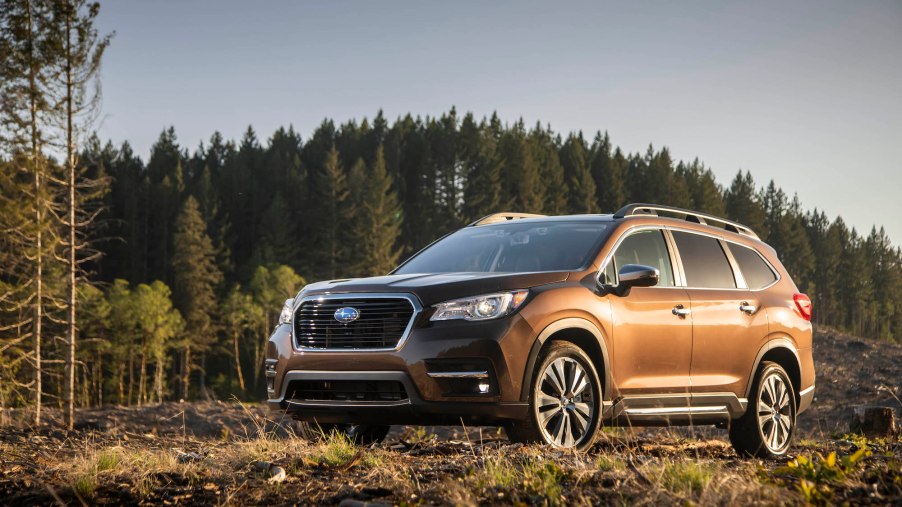
How Does Subaru EyeSight Work?
In recent years, carmakers have increasingly automated their safety systems. They’ve also added advanced features like blind-spot monitoring and rear cross-traffic alerts to even their base models. For example, Subaru introduced its EyeSight system in 2008 and has continued to improve it.
Here’s everything you need to know about Subaru’s advanced driver-assist system.
What is Subaru EyeSight?
Subaru EyeSight began as the first safety platform using a dual-camera setup. Today, EyeSight offers a high-tech alert system that anticipates danger by watching the road with an extra set of eyes. Those extra eyes are, in fact, two color cameras tucked behind the rearview mirror. Subaru says they operate in stereo to provide onboard computers with a 3D view of the road and cars ahead.
As EyeSight technology continues to evolve, it also adds more safety features. In fact, 2021 Subaru models equipped with EyeSight get a whole suite of driver aids. They include adaptive cruise control, lane-keep assist, sway warning, pre-collision braking, pre-collision throttle management, and more.
How does Subaru EyeSight work?
EyeSight’s two cameras continually scan the road for unexpected dangers by creating a 3D view of what lies ahead. So, how do the cameras’ inputs work with the system?
Subaru’s adaptive cruise control uses the cameras’ inputs to keep a user-defined distance from the car in front. Because of EyeSight, the brand’s adaptive cruise control works in slow-speed stop-and-go traffic and on interstate highways.
Also, lane-keep assists and sway warning features use EyeSight to determine where the lane’s edge begins and ends. The system can provide corrective steering to nudge the vehicle back into its lane unless it detects the lane-change signal. You can easily override the steering inputs to change lanes.
Additionally, EyeSight provides input to the pre-collision braking and pre-collision throttle control systems whenever it detects an imminent collision. Pre-collision throttle control reduces engine power. It also provides more time for braking if you don’t lift your foot off the gas. And pre-collision braking can initiate emergency braking with or without your input. Sometimes a fraction of a second can be the difference between a collision and a close call.
Is EyeSight available on all Subaru models?
Subaru EyeSight is available on only two of the WRX’s four trims. But it comes with all 2021 models.
For an extra $845, EyeSight is an option on 2021 Impreza and Crosstrek models equipped with a continuously variable transmission. Of course, the CVT also adds $1,350 over the standard transmission.
EyeSight also comes standard on all 2021 Forester, Legacy, Outback, and Ascent models.
Does it live up to the hype?
In 2018, the Insurance Institute for Highway Safety‘s Highway Loss Data Institute conducted a study with interesting results. It shows Subaru vehicles equipped with pedestrian avoidance systems such as EyeSight had 35 percent fewer insurance claims for pedestrian collisions.
Considering vehicle-pedestrian collisions killed nearly 6,000 people in 2016, $2,200 is a small price to pay to improve your chances of avoiding one. And because it also prevents other collisions, Subaru EyeSight is worth the hype.



